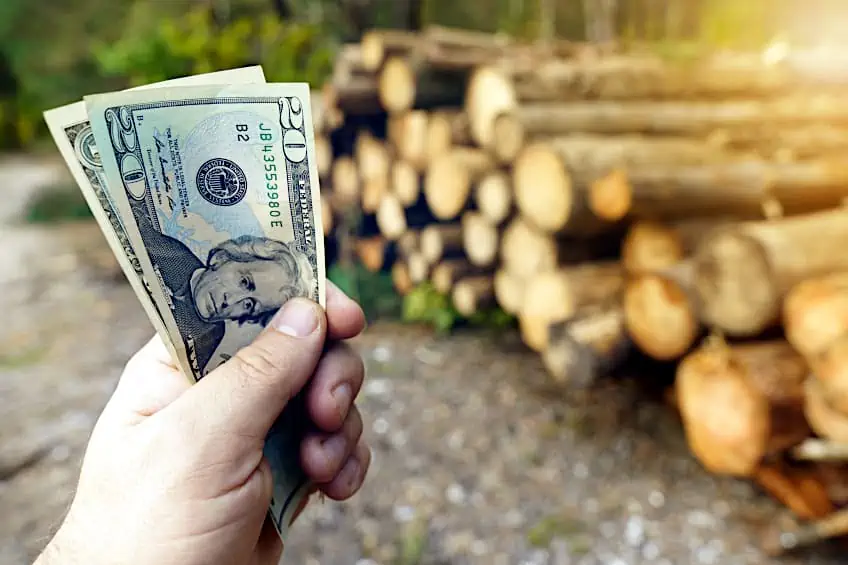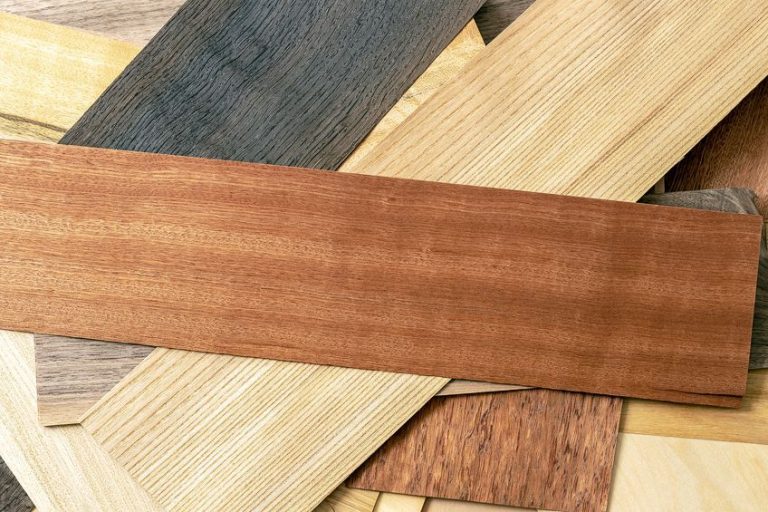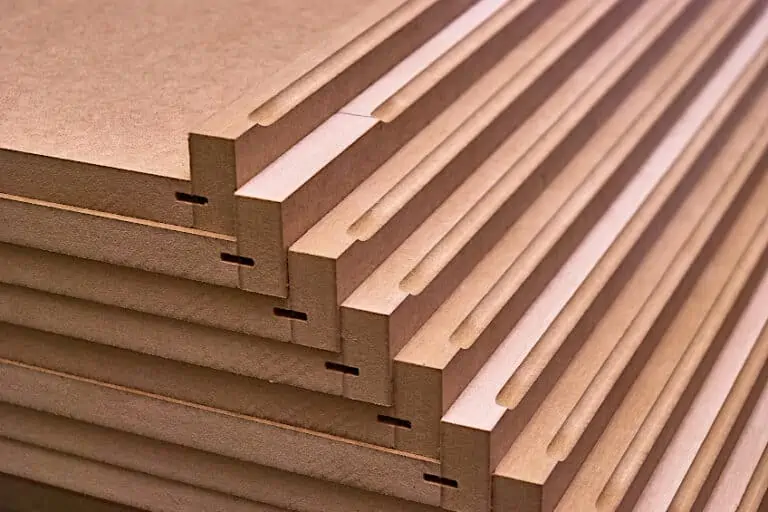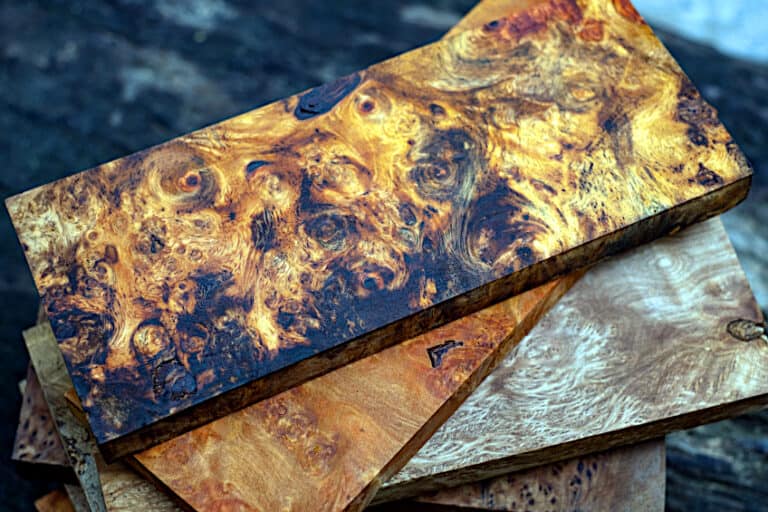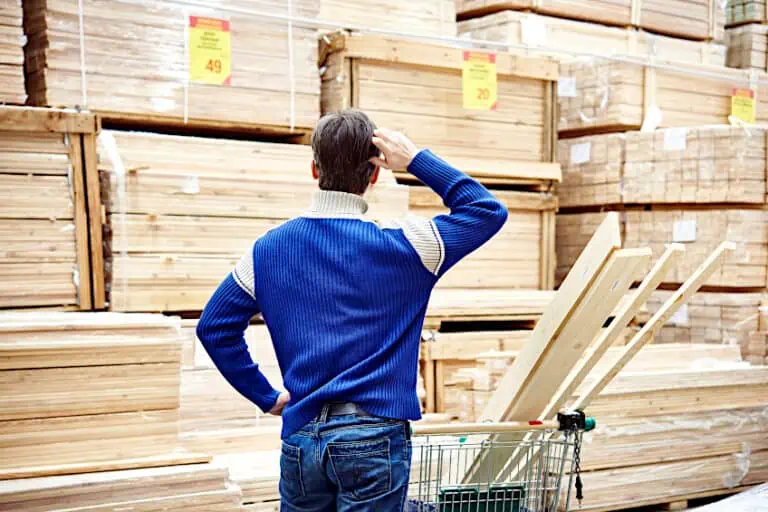Tree Burl Value – How to Determine the Cost of Burl Wood
We live in a world that is largely capitalistic, and, as a result, there are a number of commodities that become expensive due to the rule of supply and demand. After all, if something isn’t abundant like diamonds, gold, or the newest PlayStation, people who really want these things are more often than not willing to pay quite a bit of money for them. In the world of lumber, there are certain tree species that are rare and/or difficult to process which means. If we’re following the rules of supply and demand, these are typically more expensive than the more readily available wood species. It’s not just rare wood species that can fetch a pretty penny though, tree burls have fast become some of the most valuable forms of lumber on the market. Let’s have a look at what tree burls are, why they’re so rare, and exactly how much they fetch on the open market.
Table of Contents
What Is Wood Burl?
Wood burl is one of those things that everyone has come across in their lifetime, but nobody really seems to know it by name. What is wood burl then? Wood burl is essentially a growth of malformed bark that grows on the trunk, branches, and root system of trees. These growths can be large or small depending on the environment as well as the tree species it is attached to.
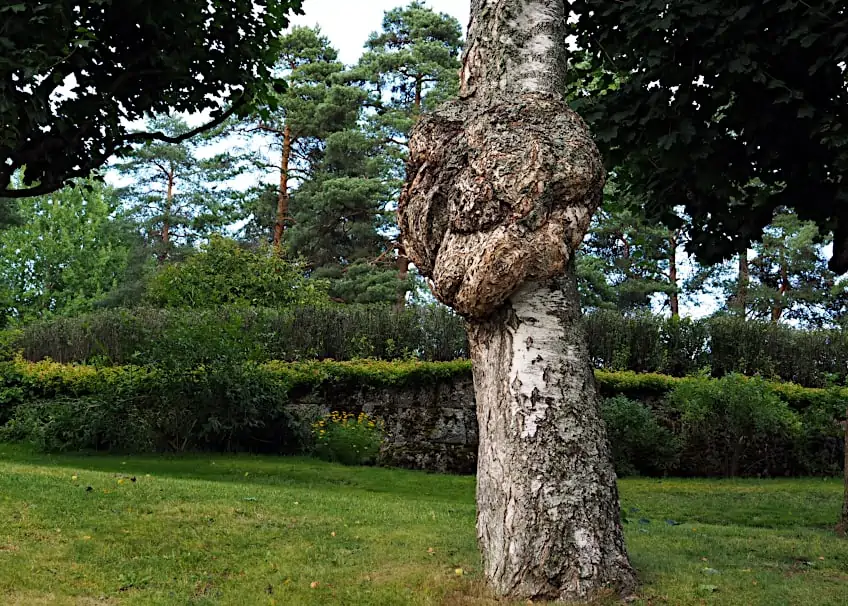
Is wood burl a different species of wood? Well, no it’s not, but rather a subspecies of wood that still belongs to the same species of tree it’s found on. This means that wood burl takes on the name of the tree it’s attached to, such as redwood burl or cherry wood burl. This makes the burl a lot easier to identify and refer to in everyday conversation while letting you know what type of burl you’re working with.
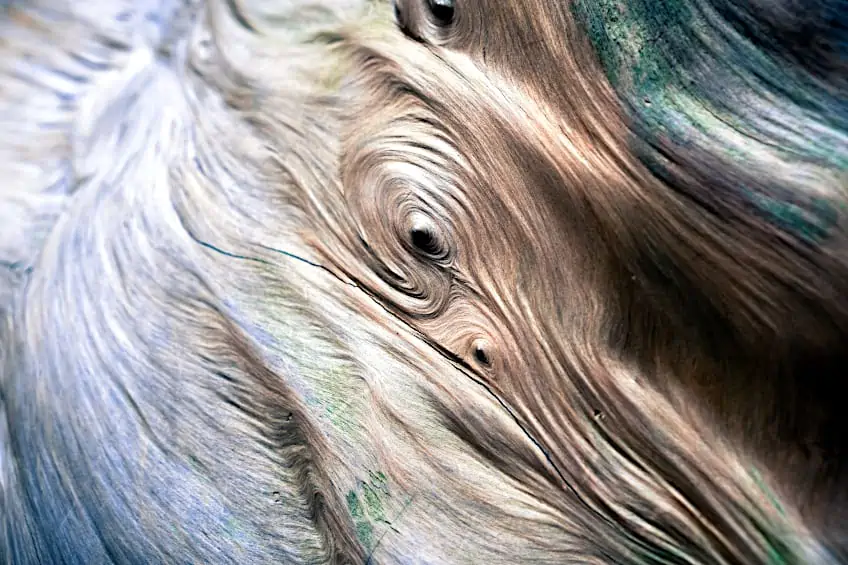
How does wood burl form? Well, wood burl forms when a tree undergoes stress. Is the tree worried about its mortgage? Probably not. Trees undergo stress when they’re exposed to harsh conditions or come under attack by things like fungus, insects, and/or animals in their habitat. This stress activates a defense mechanism that manifests in the form of wood burl.
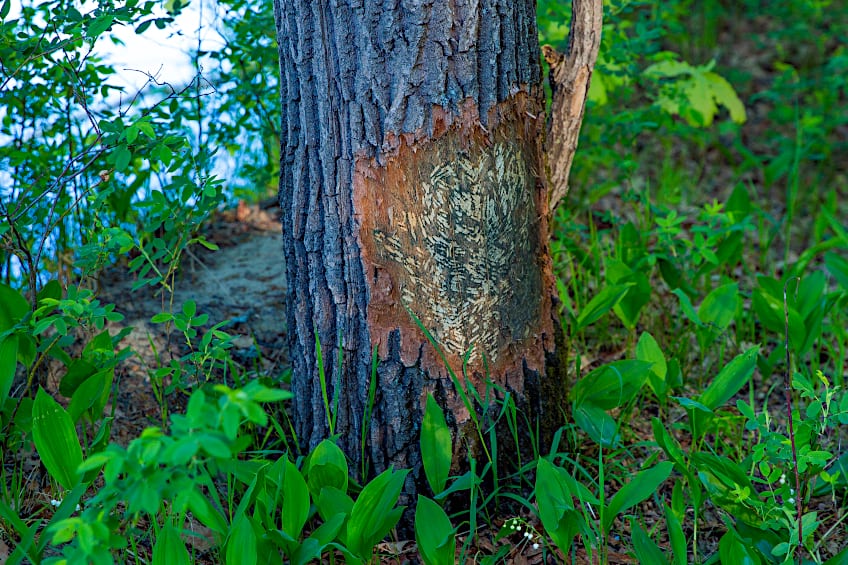
How does this defense mechanism work? Well, when a tree is exposed to things like brush fires, floods, waterlogged land, and/ or insect infestation it will form little bumps on the exterior of its trunk and sometimes on its root system. These little bumps are tree buds, and they’re designed to kick in and grow a new tree in the event that the original one falls over and dies.
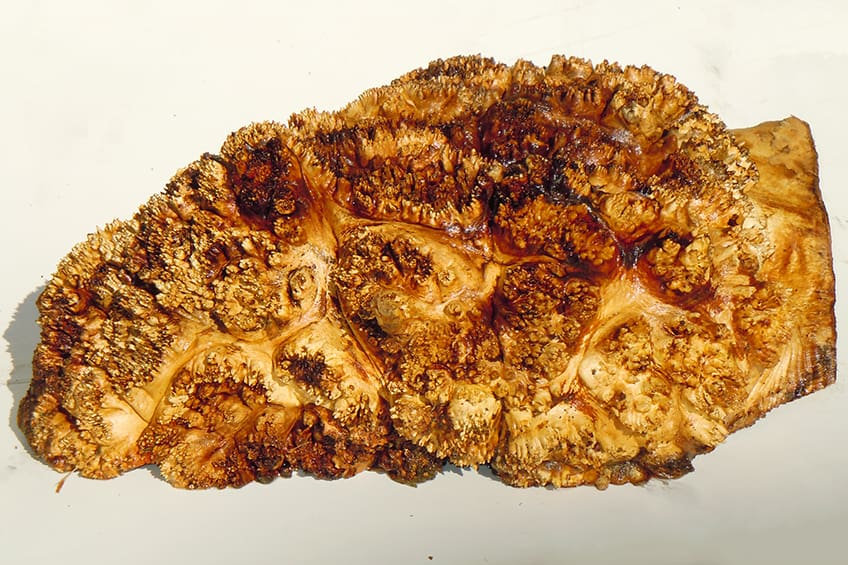
If a damaged tree doesn’t fall, these buds will sprout incorrectly and turn into what is essentially weirdly shaped wood all over the trunk and sometimes the root system of the tree. This is what wood burls are, and in some cases, they can even be found deep underground attached to the tree’s most vital roots. Wood burls are pretty rare too, especially in areas with fair weather, which is where most people tend to live.
What Makes Wood Burl So Expensive?
Tree burl value is a weird thing, after all, wood is wood, right? Well, as we mentioned previously the rules of supply and demand take president in the world at large, which means that even though on a fundamental level burl wood is just that, wood, it can fetch quite a bit of money to the people who want to get their hands on it. So, this begs the question, why do people want this wood?

Rarity alone doesn’t quite explain tree burl value, and to get a better understanding of why it is so sought after we have to like inside it. Once you crack one of these bad boys open, you’ll find that it’s remarkably different from the type of wood that you would find in parts of trees that you would normally harvest. How different you ask? Tree burl has a grain and color that is completely unique from burl to burl.
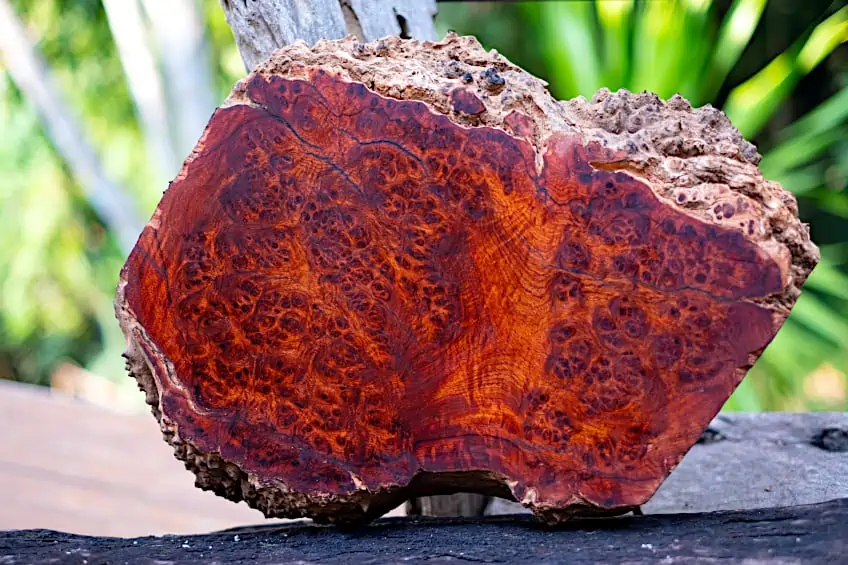
This isn’t an overstatement. There are no two tree burls that you’ll crack open that would have an even remotely similar appearance. It is for this reason that they’re one of the most coveted portions of tree species capable of producing them, but it does make you wonder why so many people are willing to pay exorbitant amounts of money for what is essentially weirdly shaped tree bark, doesn’t it?
Well just like people are willing to fork over millions of dollars for one-off car builds, phone cases, and footballs signed by Tom Brady, people are also willing to pay quite a bit of money for furnishings that have a completely unique finish and grain to them. It’s for this reason that woodwork enthusiasts and professional crafters are willing to pay so much to get their hands on the raw material.
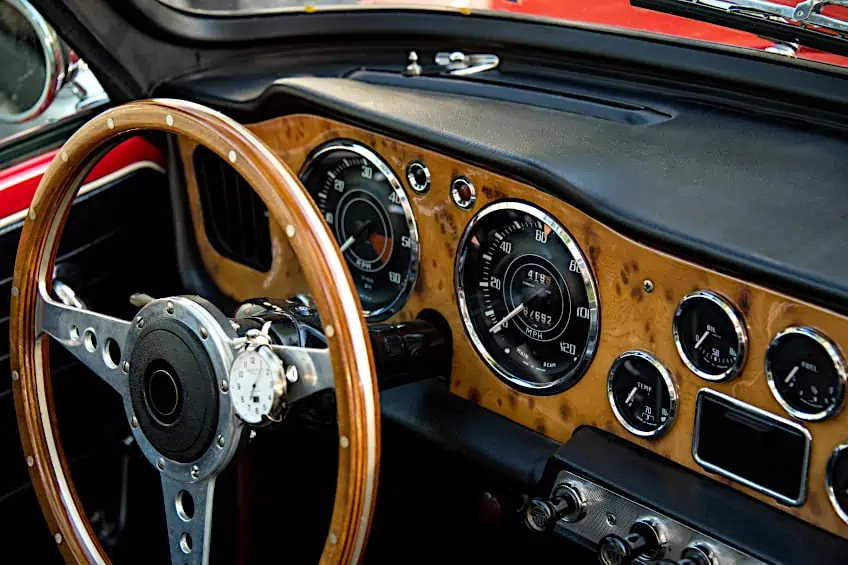
At the opposite end of this value equation, people also make quite a bit of money selling burls. How much money do you ask? Well, considering that the lumber industry reported a revenue of around $130,000,000,000.00 this year, you can do some very quick math and figure out just how lucrative selling burls can be if you have the right buyers.
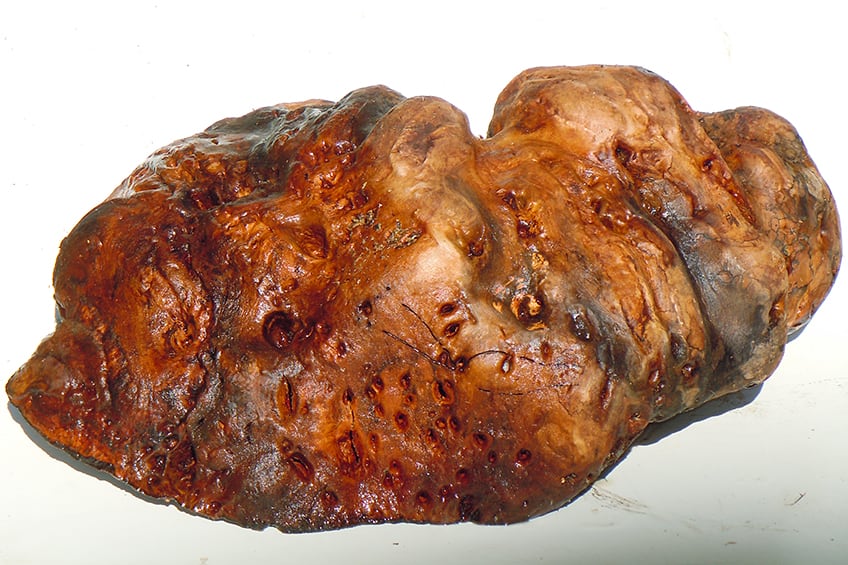
With so much money flowing through the industry, it should come as no surprise to learn that the poaching and illegal distribution of tree burl are rampant in some communities. Although, there is no harm in taking some burl from a tree, right? Wrong. Harvesting burl from a live tree can cause irreparable damage to the plant and actually cause it to decay and die in some instances.
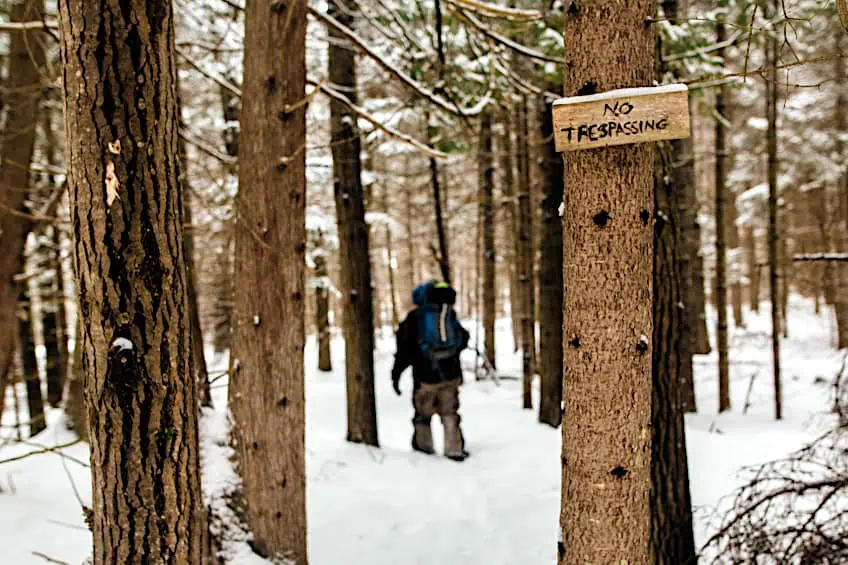
Burl harvesting should only be performed on felled trees or trees that have been designated by the relevant authorities for felling and harvesting of their resources. Burl harvesting on federally protected land can land you a hefty fine and even some jail time in some circumstances, so always ensure that you have the go-ahead from authorities and/or landowners before you get to cutting.
How Do You Evaluate the Value of Wood Burl?
There are a few things you should look at when trying to determine the value of wood burl. This applies whether you’ve gotten your hands on some burl that you’d like to sell or if you’re trying to determine whether someone’s giving you a fair price on the wood burl you’re looking to buy. Keep in mind that you’ll very rarely get good quality burl for relatively cheap, so don’t get your hopes up too high. This being said, let’s have a look at some of the factors you should consider when assessing the price of wood burl.
Here are some of the prices you can expect for a slab of burl wood depending on size and wood species.
| Common Burl Species | Price Range (Depending on Size and Grain) |
| Cherry Burl | $98.00 – $4,100.00 |
| Oak Burl | $95.00 – $2,795.00 |
| Elm Burl | $75.00 – $1,550.00 |
| Walnut Burl | $390.00 – $6,953.00 |
| Maple Burl | $95.00 – $2,795.00 |
| Ash Burl | $329.00 – $1,032.00 |
The Presence of Bark
Have you come across some burl you’re thinking of harvesting or buying? Well, a good indication of the price it could fetch is whether or not it still has its bark attached. Remember that even though burled wood is unique, at the end of the day it’s still wood, and if the bark that’s meant to protect it is missing it could mean that the wood inside has rotted, could be filled with insects, or has become “sponge” which is a squishy wood that won’t do anyone any good.
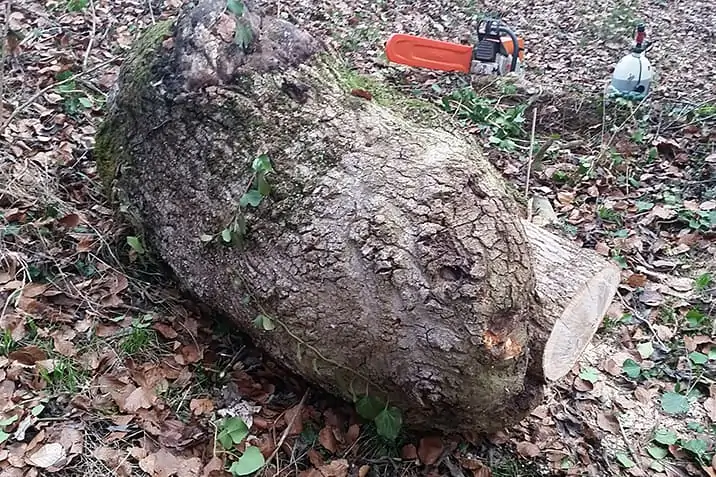
If the Burl Is Layered
If the burl you’re looking at is layered, it means that it was grown by the tree to seal off a section that has become damaged. This type of burled wood is pretty random in its shape and size and still has its bark attached, which is a clear indicator of its high value. These burls tend to be pretty thick, and the grain is often quite tense in order to protect the tree’s then exposed sapwood.
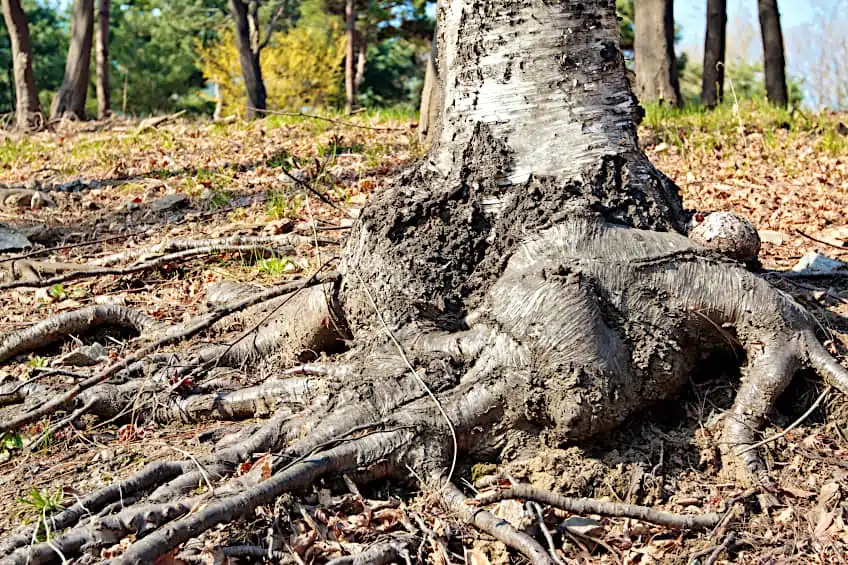
If the Burl Is Eyed
This doesn’t mean that the burl has little eyes all over it, rather that it has a circular form that resembles a swirl all the way to its center. These burls are easy to spot and are considered high value due to the swirling pattern of the wood inside them. This burl type usually grows in a dome shape too, and when you cut them open, you’ll notice an “eye” at the center of the wood grain, which is cool if you’re looking to fashion them into coffee tables or bedside tables.

The Size of the Burl
The size of the burl affects its value for a number of reasons. The bigger the burl, the more wood can be portioned out from it, and if you’re working with a really big piece of burl wood you could have buyers interested in fashioning entire countertops or dining room tables out of them. This means that you’ll be able to name a reasonable price for your find, and if you’re buying you might even be able to request the size and thickness of the board you’d like if the owner hasn’t cut it up already.
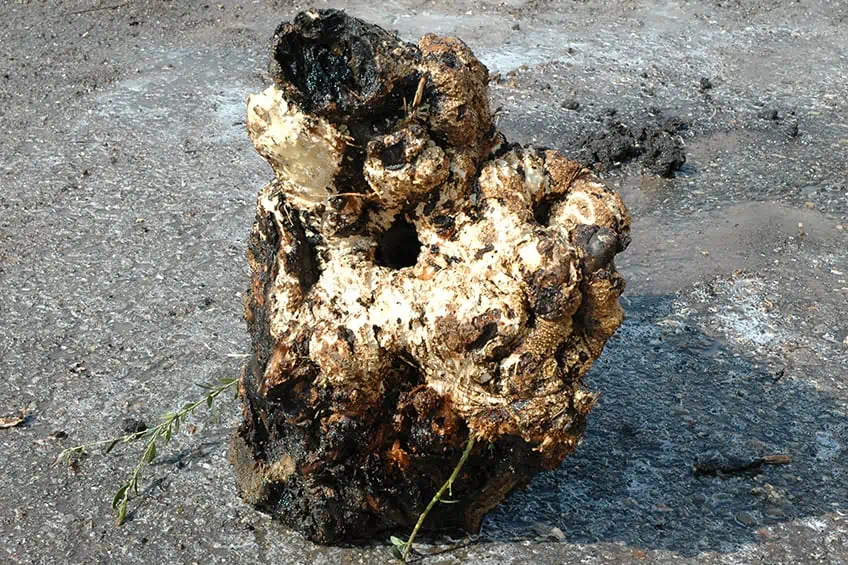
The Species of the Burl
At the end of the day, wood is wood, and certain wood species are a lot more valuable than others due to their scarcity and/or what can be made using them. Wood burl, even though it is inherently valuable, is usually priced according to the wood species it’s harvested from, or at least the species it is derived from has a big impact on its price.
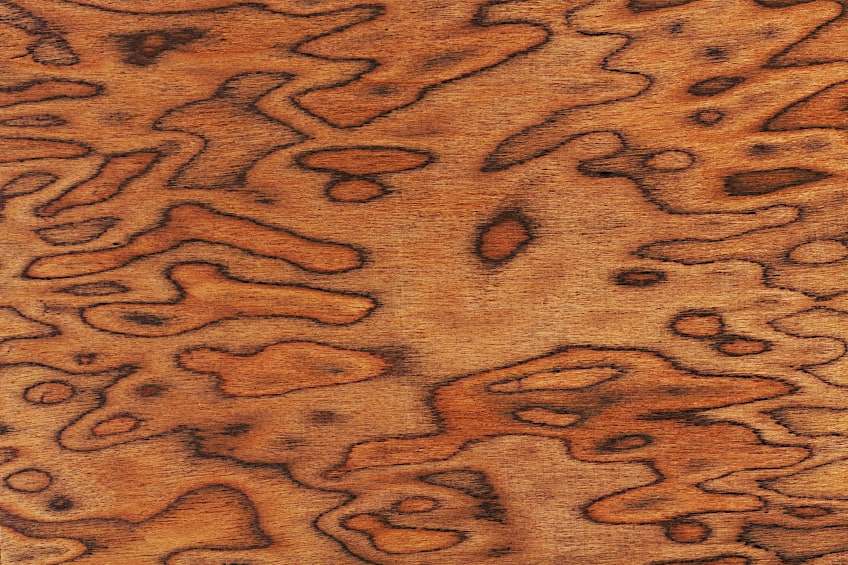
A good example of this is how redwood burl and walnut burl have a stark difference in their piece range. This is because walnut wood is one of the more expensive wood types overall thanks to its exclusivity and rarity which means that walnut burl can be even more expensive than conventional walnut wood. Redwood burl, while still relatively pricey, is nowhere near the price of walnut burl.
Moisture Content
When it comes to the craft of woodworking there’s absolutely no situation where wet wood is useful. This is why wet wood or wood that has recently been pressure treated is sold for much cheaper. This principle applies to wood burl too as you would have to wait for the wood to dry out after purchasing it for it to be anywhere near functionally ready.
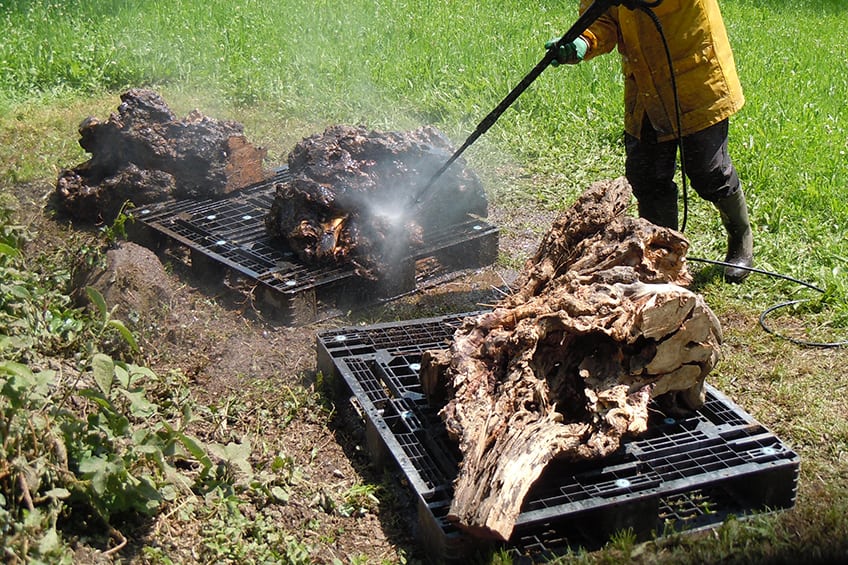
Wood Grain
Regardless of which wood species you’re dealing with, the grain plays a big part in how much the wood will be with. Depending on the application and aesthetic appeal of the grain it could be more valuable or less valuable depending on what the buyer or intended application of the board is.
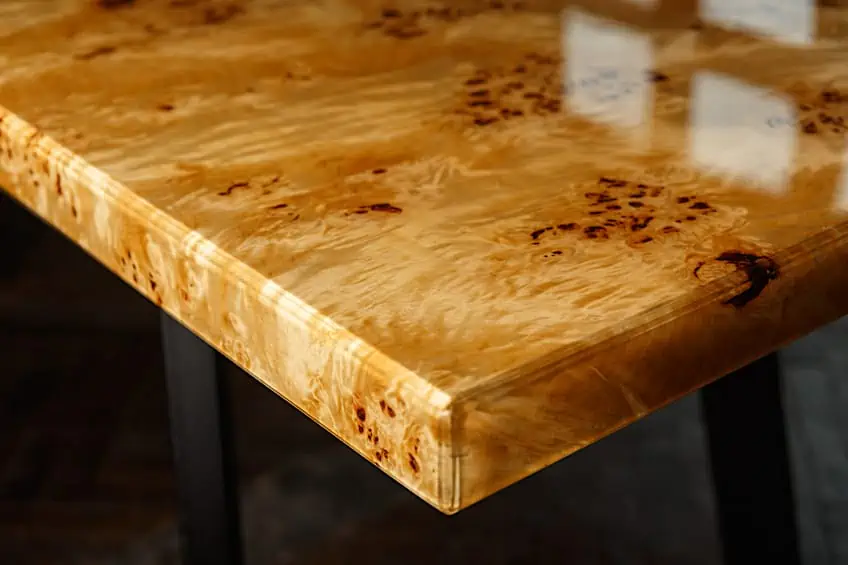
When it comes to burl wood the more intricate and unique the wood grain is the more its worth. For example, if you happen to have some “eye burl” which is characterized by a swirling pattern that resembles an eye in the center it will be worth more than the more commonly found “layered burl”.
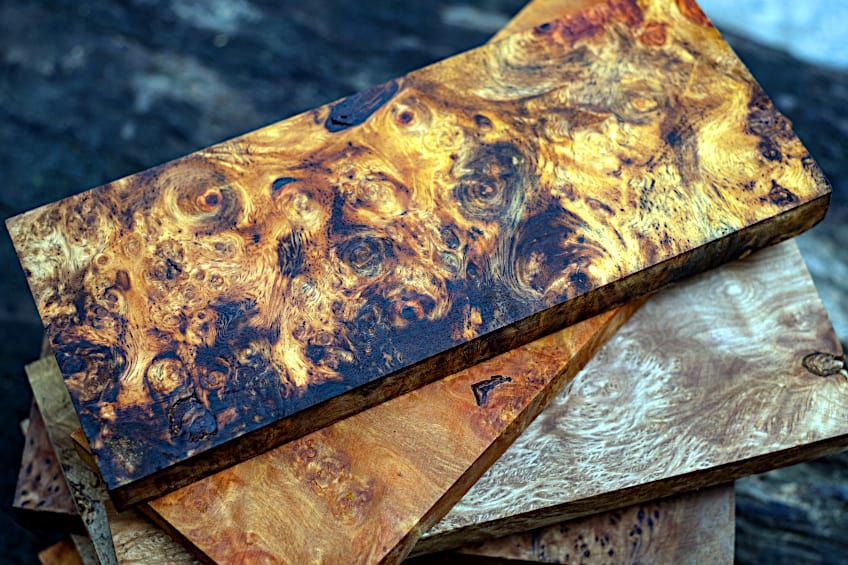
What is the best way to sell burl? There are a few ways you can go about selling wood burl, but the one you choose usually depends on which market you’re catering to. If you’re selling wood to woodturners, you’ll typically sell it per pound and by species, because they tend to want to do the cutting, sizing, and turning on their own, which makes sense.
If you’re in the business of selling wood to crafters, you’ll typically have it cut up into slabs and price it by species and the intricacy of the wood grain. This also makes it easier to inventory and categorize if you’re going to be advertising your product online. Some slabs like oak burl and redwood burl can be quite big so keep this in mind when it comes to storage and pricing.
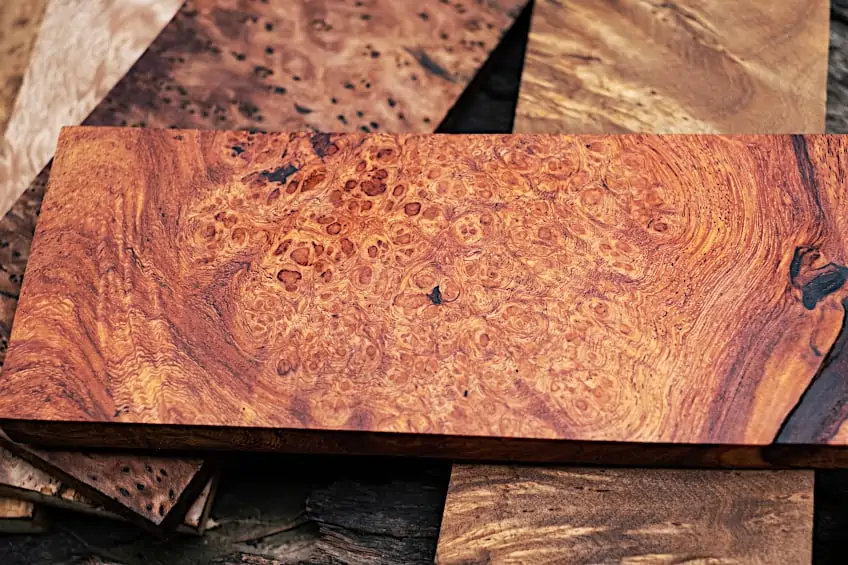
If you’re in the business of harvesting, you’ll likely have to cater your burl wood prices around the weight, size, and species you have. When harvesting your burl it’s best to harvest and bisect your burl to ensure that it’s manageable to transport. Burl wood prices decrease dramatically if they’re cut up too much as this limit’s what the customer can fashion these wood boards into.
Regardless of what you intend to do with burl wood you should be prepared to pay going market rates, although certain vendors are willing to negotiate on prices and private sellers might even be willing to swap their burl for wood that you have on hand. This being said it’s worth checking out message boards, social media, and local listings before heading to a major supplier.
Now that you know what burl wood is, what factors make burl wood so expensive, and have a good idea of how much burl wood costs per slab, it’s time for you to get out there and put your new-found knowledge to the test. Remember to always source your burl wood ethically and to watch out for the factors that influence the price of burl.
View our Burl Wood Prices web story here.
Frequently Asked Questions
Can You Find Tree Burl Inside a Tree Trunk?
Can you find a tree burl inside a tree trunk? While tree burl always protrudes to the exterior of a tree trunk, the majority of the good-looking grained wood is typically on the inside. You might also be able to find small tree burls on the inside of tree root systems and tree trunks depending on where the tree experienced damage.
Can You Find Tree Burl for Sale Online?
Can you find tree burl for sale online? Yes! There are loads of websites and woodworking forums on which private e sellers sell and even swap tree burl. Besides online sites, you can check your local listings and classifieds for individuals selling tree burls in your immediate area or county.
Where Can I Find Burl Buyers?
Looking for burl buyers? If you’re looking to sell some wood burl, there are loads of people all over the country and even the world willing to take it off your hands. You don’t have to sell your wood burl to private individuals either, there are lumber suppliers that are willing to buy burl from private individuals too.

I have been into woodworking since 2005 and woodturning since 2011. Because of my love for wood and woodworking, I started woodhappen.com to teach other enthusiasts about how to finish and seal wood, the best woodworking tools, the different types of wood, and everything else related to woodworking! Read more about me here.

